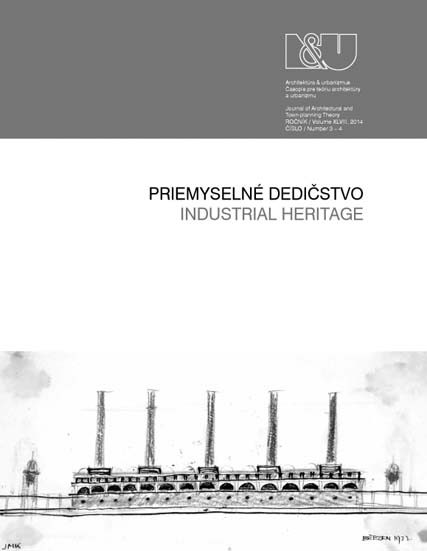Editoriál
Editorial
Author(s): Nina Bartošová, Henrieta MoravčíkováSubject(s): Fine Arts / Performing Arts
Published by: Historický ústav SAV, v. v. i.
Summary/Abstract: Recently, architectural discussion in Slovakia has been stirred by the dramatic wave of demolition of industrial heritage from the previous century. One after the other, the entrance building to the Ružomberok paper works, the former grain mills in Nitra, and even the disused thread works and the Stein brewery in Bratislava have fallen to the wrecking ball. Yet the views of the professional community in this area, though, are far from unified. Indeed, quite the opposite: these interventions in former industrial complexes have almost completely polarised the professional community. These ambiguous attitudes stem not only from the absence of a deeper knowledge and evaluation of the heritage values of this architecture, but also the lack of clarity in strategies for its potential protection and renovation. Although views on the architectural heritage of the industrial era have been in continuous evolution since the formation of the field of industrial archaeology in the 1950s, unambiguous answers on why and how to conserve this heritage have not yet permeated into general public awareness. Industrial heritage conservation remains a field that seemingly concerns only a limited group of experts, supported by individuals with a personal connection to the industrial production – mostly former employees of the works, or specific enthusiasts.Despite the growing interest in industrial heritage, the conservation of which is promoted by the International Committee for Conservation of Industrial Heritage (TICCIH) along with other organisations and heritage institutions, it would seem that little agreement exists as to what common benefit is provided through the protection of these buildings. Not even the evidence of dozens of conversions that have brought fading structures back to full life again reveal with clarity which particular factors can bring a project to successful completion.The current global situation, characterized by economic and ecological crises that can be considered a direct consequence of the ruthless pursuit of individual interests, mass production and consumption over the last century, offers a a good occasion to reflect on the essence and meaning of industrial heritage. Such a reflection becomes even more urgent when observing that a number of monuments are balancing on the brink of extinction and right now is probably the final chance to make an effort to save them.The immediate need to revaluate the approach to industrial heritage is equally emphasized by contributors of the publication Industrial Heritage Re-Tooled (DOUET, ed., 2012), issued by TICCIH. At the same time it becomes clear that it is necessary to return to the very theoretical roots of heritage conservation, as the gap between the general interests of society and the interests of conservationists continues to grow. The renowned British industrial heritage and restoration expert Sir Neil Cossons points out in his essay Why Preserve the Industrial Heritage, that “carefully honed mores mean little to the outside world”.In the present issue of this journal, we aim to provide an overview of the investigation and protection of industrial heritage in the various states of central Europe. Overall evaluations of industrial heritage in Slovakia, Hungary and the Czech Republic are supplemented by case studies from Germany and Slovakia. While the German example represents one of Europe’s most demanding realisations in converting open-pit coal mines into a natural landscape, the Slovak contributions are taken from the area of basic research and reflect the current state of scholarly efforts in this field.
Journal: Architektúra & Urbanizmus
- Issue Year: 48/2014
- Issue No: 3-4
- Page Range: 118-119
- Page Count: 2
- Language: Slovak, English

